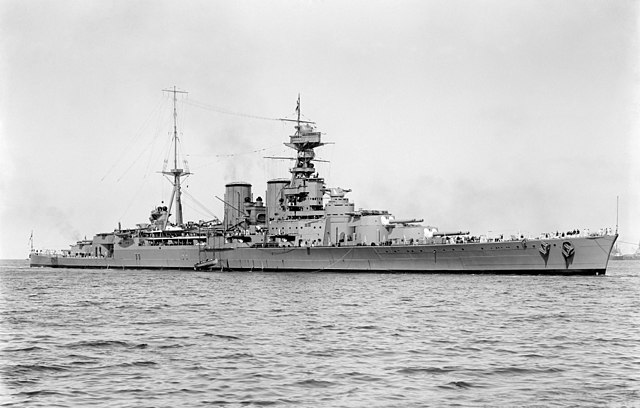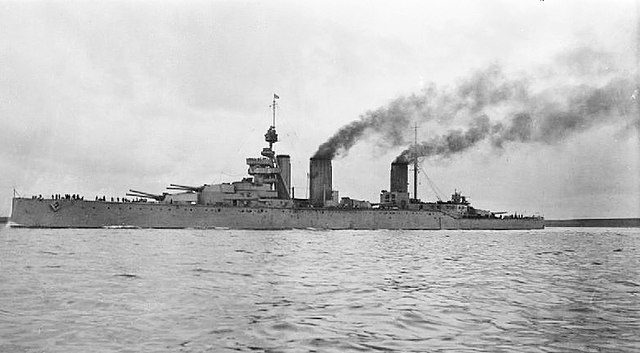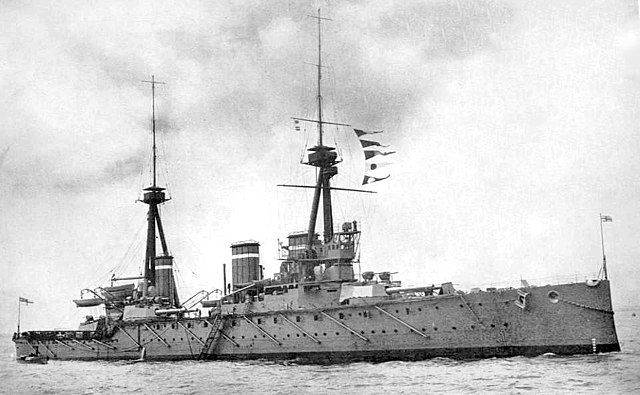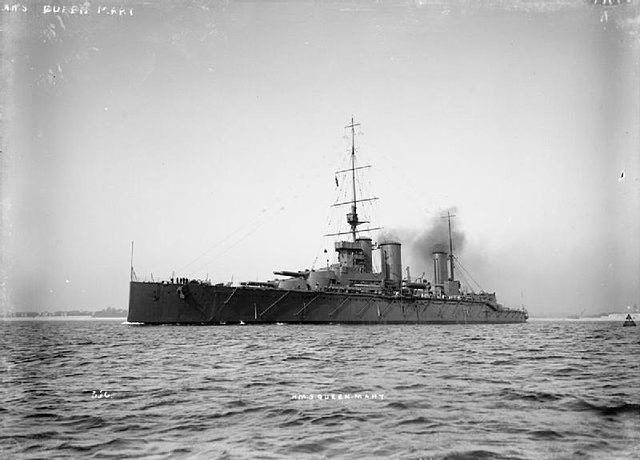The Lion class were a pair of battlecruisers built for the Royal Navy before World War I. Nicknamed the "Splendid Cats", the ships were a significant improvement over their predecessors of the Indefatigable class in speed, armament and armour. These improvements were in response to the German battlecruisers of the Moltke class, which were in turn larger and more powerful than the first British battlecruisers of the Invincible class.
Princess Royal at anchor, before 1916
Lion underway
Lion's 'Q' turret showing the armour plate blown off by the ammunition fire
Queen Mary blowing up at the Battle of Jutland; she is hidden by the explosion and smoke. To the left is Lion, surrounded by waterspouts from enemy shots falling short.
The battlecruiser was a type of capital ship of the first half of the 20th century. These were similar in displacement, armament and cost to battleships, but differed in form and balance of attributes. Battlecruisers typically had thinner armour and a somewhat lighter main gun battery than contemporary battleships, installed on a longer hull with much higher engine power in order to attain greater speeds. The first battlecruisers were designed in the United Kingdom, as a development of the armoured cruiser, at the same time as the dreadnought succeeded the pre-dreadnought battleship. The goal of the design was to outrun any ship with similar armament, and chase down any ship with lesser armament; they were intended to hunt down slower, older armoured cruisers and destroy them with heavy gunfire while avoiding combat with the more powerful but slower battleships. However, as more and more battlecruisers were built, they were increasingly used alongside the better-protected battleships.

HMS Hood, the largest battlecruiser ever built, in Australia on 17 March 1924
HMS Shannon, a Minotaur-class armoured cruiser
Invincible, Britain's first battlecruiser
HMS Queen Mary, the last battlecruiser built before World War I








